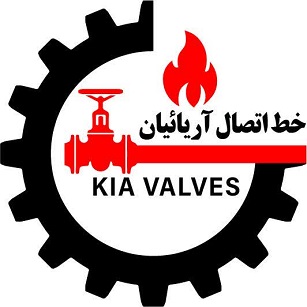درباره شرکت خط اتصال آریائیان KIA VALVES
Components Of Gate Valves
Gate valves are relatively simple devices, consisting of several essential components that work together to control the flow of fluids. Here are the main components of a typical gate valve:
- Body:The body is the outer casing of the gate valve and provides the main structure and housing for the other components. It contains the fluid passageway, also known as the bore or port.
- Bonnet:The bonnet is the top portion of the valve that is bolted or threaded onto the body. It serves as a cover for the internal components and provides a point for attachment of the valve’s stem and actuator.
- Gate:The gate is the primary moving part of the valve, and it controls the flow of fluid through the valve. It is typically a flat or wedge-shaped barrier that can be raised or lowered within the valve body to either allow or block the flow of fluid. When the gate is fully raised, it allows maximum flow, and when fully lowered, it blocks the flow completely.
- Stem:The stem is a rod-like component that connects the gate to the actuator or handle located above the bonnet. When the stem is turned or moved, it raises or lowers the gate inside the valve. The stem’s sealing is crucial to prevent leakage around the stem.
- Seats:Gate valves have two seats – one on the upstream side and one on the downstream side of the gate. These seats are designed to form a tight seal with the gate when the valve is closed, preventing the flow of fluid through the valve.
- Wedge or Disk:In some gate valves, especially those with a wedge-shaped gate, there may be a separate wedge or disk that fits between the gate and the seats. This component enhances the seal and helps guide the gate as it moves.
- Actuator or Handle:Gate valves can be operated manually using a handle or automatically using an actuator. Manual valves have a handle that is turned to operate the valve, while automated valves use various types of actuators (e.g., electric, pneumatic, hydraulic) to control the gate’s position.
- Body Bolts/Nuts:Bolts and nuts are used to secure the bonnet to the body. These fasteners ensure that the valve remains tightly sealed and structurally stable.
- Yoke:The yoke is a bracket-like structure attached to the bonnet that provides support and stability to the stem, especially in larger gate valves.
- Packing Gland:This component surrounds the stem as it passes through the bonnet. It contains packing material (often made of materials like graphite or PTFE) that forms a seal around the stem to prevent leakage.
- Packing Nut:The packing nut is used to compress the packing material in the packing gland, adjusting the tightness of the stem seal. It is tightened to prevent leaks and loosened when maintenance or repairs are required.
These components work together to allow the gate valve to control the flow of fluids by raising or lowering the gate to open or close the passageway. Proper maintenance and lubrication of these components are essential to ensure the valve operates effectively and remains leak-free.

